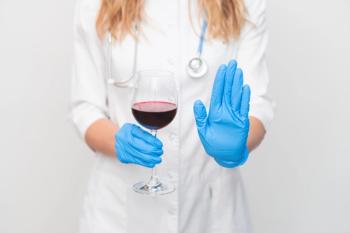
- Psychiatric Times Vol 27 No 10
- Volume 27
- Issue 10
If I Am Not For Myself: The Trials and the Triumphs of the Transgendered
Just imagine. If you are not a transgender individual, what must it feel like to always think, as far back as you may remember, that you should have the body of the opposite gender? That you were “born in the wrong body”.
It is unknown whether the legendary Rabbi Hillel ever knew any transgender people, for certainly they were around in his time. Regardless, his famous (translated) quote seems to fit perfectly. Coincidentally or not, it also fits me in intriguing ways; I have been given the Hebrew name Hillel by my Rabbi, and have been privileged to be the Medical Director of a clinic specializing in gender identity concerns. Here is some of what I have learned over the last 15 years.
Trials
“This is clearly not a choice. Why would anyone choose to endanger their entire lives, in all likelihood lose significant parts of your career potential as well as friends and family? No one does this out of choice. They do it primarily because they need to. It is about grappling with the soul of one’s being.”
Just imagine. If you are not a transgender individual, what must it feel like to always think, as far back as you may remember, that you should have the body of the opposite gender? That you were “born in the wrong body”.
If you are older, say around my age, you likely did not have access to information about how others have dealt with this dilemma. You may have tried to conform to your outward appearance as best you could, maybe with some secretive cross-dressing (not for sexual excitement per se) for identity confirmation, until you could no longer do so. Due to related anxiety or depression, you may have gone for mental healthcare, but not revealed the real problem or encountered clinicians who did not understand the problem. You now know the risks of trying to change your outward appearance, including the possibility of being murdered (as was the case recently in Milwaukee). If you are a parent still raising your child, will he or she be able to accept your looking like a “mother” instead of a “father” or a “father” instead of a “mother”?
If you are younger, even pre-pubertal, what do you and your family do about it? Should you try intensive behavioral therapy to accept your biological appearance? Should you stop the hormonal changes of adolescence to make future physical changes easier? Or, should you just wait to see how this develops during adolescence?
“If I am not for myself, who will be?
If I am for myself alone, what am I?
And if not now, when?” –Rabbi Hillel
You never quite fit into any social groups in the United States. Although in some countries at some times in history, people like you have been revered, here and now you are the most discriminated against minority group--a minority among minorities. You are most associated with the LGBT (Lesbians, Gay, Bisexual, Transgender) coalition, but you are not discriminated against necessarily due to sexual preference like the others, but for your gender identity. You aren’t welcomed by most religious traditions.
If you want to proceed with changing your physical appearance to match your gender identity, money may be a major obstacle. Usually, insurance doesn’t cover corrective surgery. Sometimes, you have to stop midway during the process, either for financial or psychological reasons. Then, even with the best surgeons, the female to male genital surgery is more cosmetic than functional.
You are often left wondering, why did this happen to you? Though some genetic correlations are beginning to emerge, causation remains a mystery. Many come to view this as a religious challenge, in that they have been given the challenge to teach the world about gender identity.
Triumphs
“I am at peace now, and feel whole, for the first time in my life. I now love myself, and I believe this will ultimately overflow to others”
All these trials, and more, call for the utmost courage. But the triumphs, oh the triumphs! To maneuver through this obstacle course over many years and to emerge as a really new person, both in name and appearance, can almost seem miraculous.
I often don’t see the patient after surgery, so my follow-up knowledge is incomplete. Yes, I know there are some reports and desire to change back, perhaps in 5% or less. But the vast majority seem to be much more satisfied and happy, despite continued social stress related to the physical change. Some “pass” easily; many don’t.
Professionally, it is the closest we have to a cure in psychiatry. Take that back, because the cure may be more from hormonal and surgical treatment, though supportive psychotherapy and practical coaching is necessary along the way.
Professionally, it is also a triumph of so-called evidence-based treatment or expert guidelines. Well before our recent embrace of such approaches, we had standards of care for Gender Identity Disorders, developed by the Harry Benjamin International Gender Dysphoria Association (now known as the World Professional Association for Gender Health). First drafted in 1979, it had several revisions. The last revision was in 2001, indicating a general acceptance of these standards. In my work as a psychiatrist, I have to approve their entry into the program, and have rejected some due to psychosis. I later have to approve sexual reassignment surgery and review that they have received appropriate hormonal treatment, and lived successfully in their new gender for at least one year. A good clinical test of time, I believe.
Therapeutics
“Because dysphoria is currently listed as a psychological disorder, transgendered people are assumed to be mentally ill.”
Once upon a time, homosexuality was included as a psychiatric disorder in our DSM. That was removed in 1973. Many in the transgender community feel the same should be done for them in the next DSM-5. This is certainly one area psychiatrists should review and reconsider, and perhaps research more--especially since there are strong and mixed opinions on this topic.
10 Quick Tips
However the diagnosis is redefined, there is much any of us can do. Some of the best advice I’ve come across- - advice that fits with my own experience and knowledge -- comes from our local advocacy group, FORGE. It provides 10 Quick Tips: Trans Inclusion for Service Providers. Here they are, slightly condensed and paraphrased by me.
1. Language
Use the name, pronoun, and terms preferred by those you encounter.
2. Manners
Remember HIPPA and don’t discuss a person’s transgender status with others unless it is absolutely necessary for their well-being or safety.
3. Focus
Try to help in any way the person desires, and refrain from using the transgender person primarily as an educational opportunity for yourself or colleagues (unless offered).
4. Policies
Your agency should have a written policy on non-discrimination on the basis of sexual orientation as well as gender identity.
5. Confront
Have a policy that prohibits prejudicial behaviors and statements, not only by staff, but by other clients.
6. Paperwork
Make sure items appropriately distinguish between sexual orientation and gender identity.
7. Know & Tell
Sensitive questions should be prefaced with an explanation about why the information is needed.
8. Empower
Lead the way when necessary, but allow the transgender patient to take over when possible.
9. Be Creative
Existing systems, forms, and facilities may not fit transgender people, so adapt them to their needs
10. Advocate
Push for beneficial changes, either in your agency, in your field, or as a volunteer citizen.
To that list, I would add 2 more tips:
11. Diagnosis & Treatment
Keep the transgender possibility in mind if treatment doesn’t proceed as expected, especially with couples therapy.
12. Learn, Learn, Learn
Given our lack of exposure and knowledge, find ways to learn more. Go to a transgender organization or event. Attend an in-service presentation on the topic. See the movie “Boys Don’t Cry.” Read some autobiographies.
Finally, when you happen to meet or see a transgender person, thank him or her for what they are teaching us about gender, appearance, courage, hope, and human potential.
Articles in this issue
about 15 years ago
Combining High-Yield CBT Methods and Pharmacotherapy in Brief Sessionsabout 15 years ago
Moral Judgments and Emotional Painabout 15 years ago
Evaluative Disordersabout 15 years ago
Advice From Moody’s Dinerabout 15 years ago
“Morality” Professor Responsible for Research Misconductabout 15 years ago
Keys to Success in ADHD Treatmentabout 15 years ago
The Impact of Screen Media on Childrenabout 15 years ago
Update on Autismabout 15 years ago
What the Future HoldsNewsletter
Receive trusted psychiatric news, expert analysis, and clinical insights — subscribe today to support your practice and your patients.













